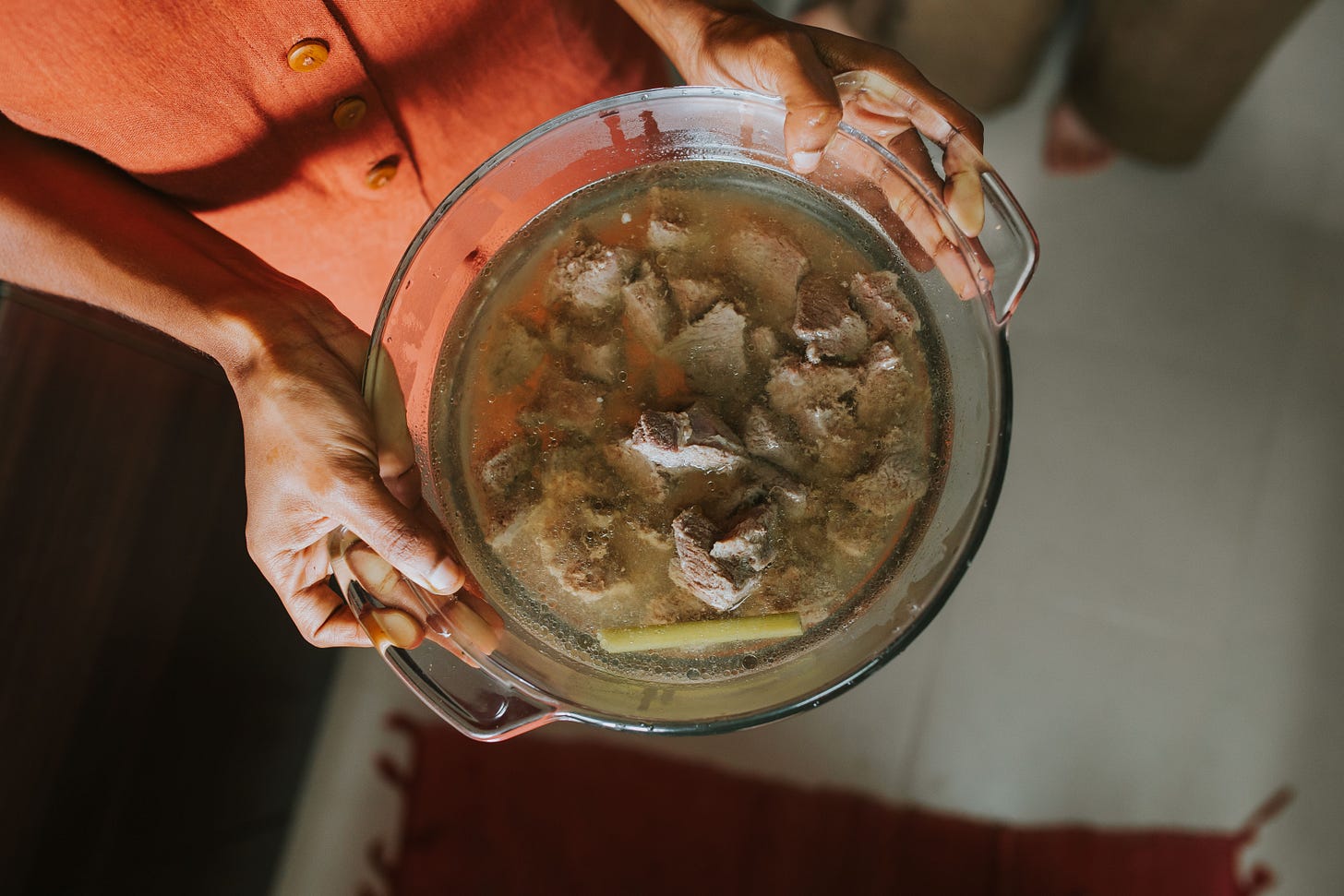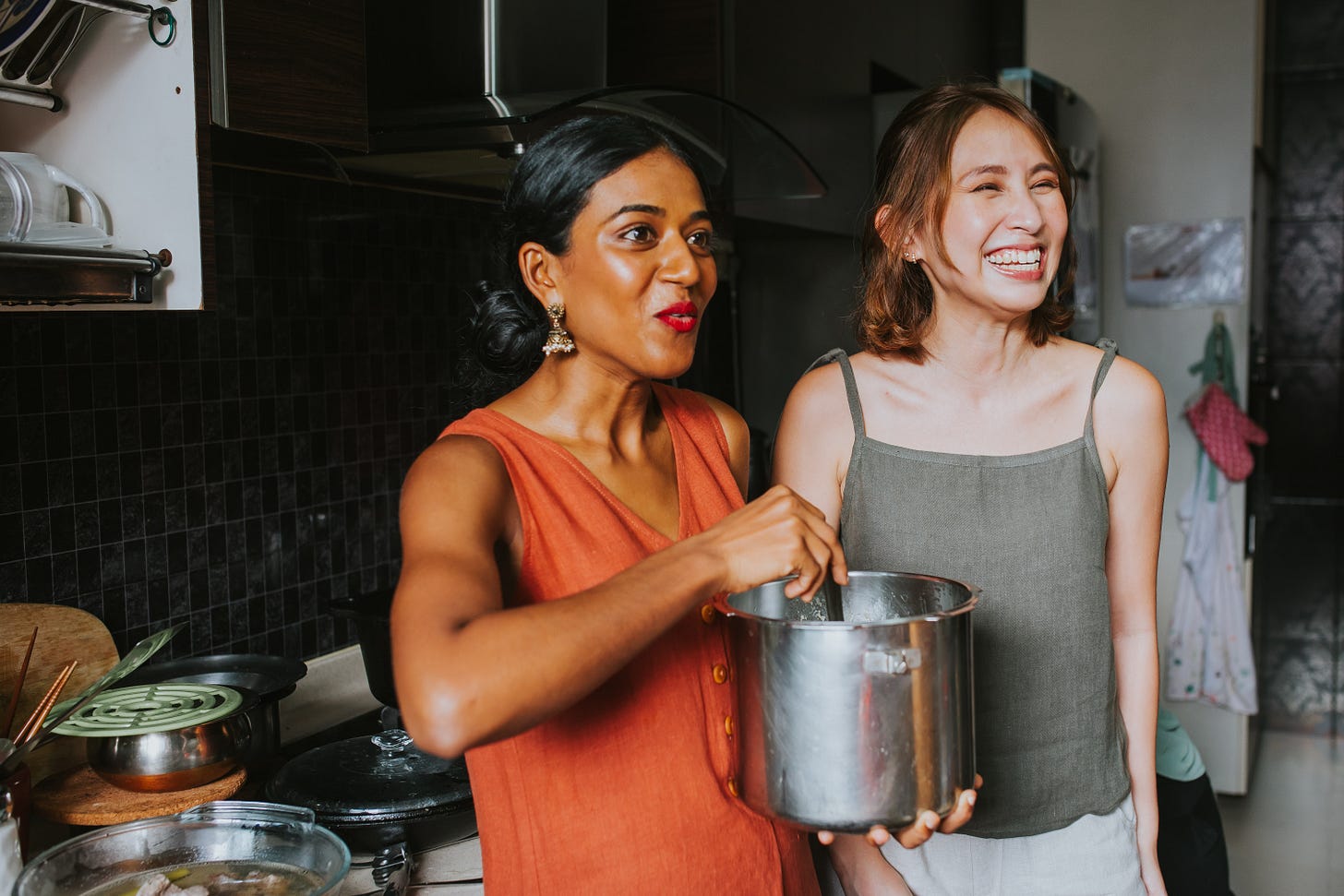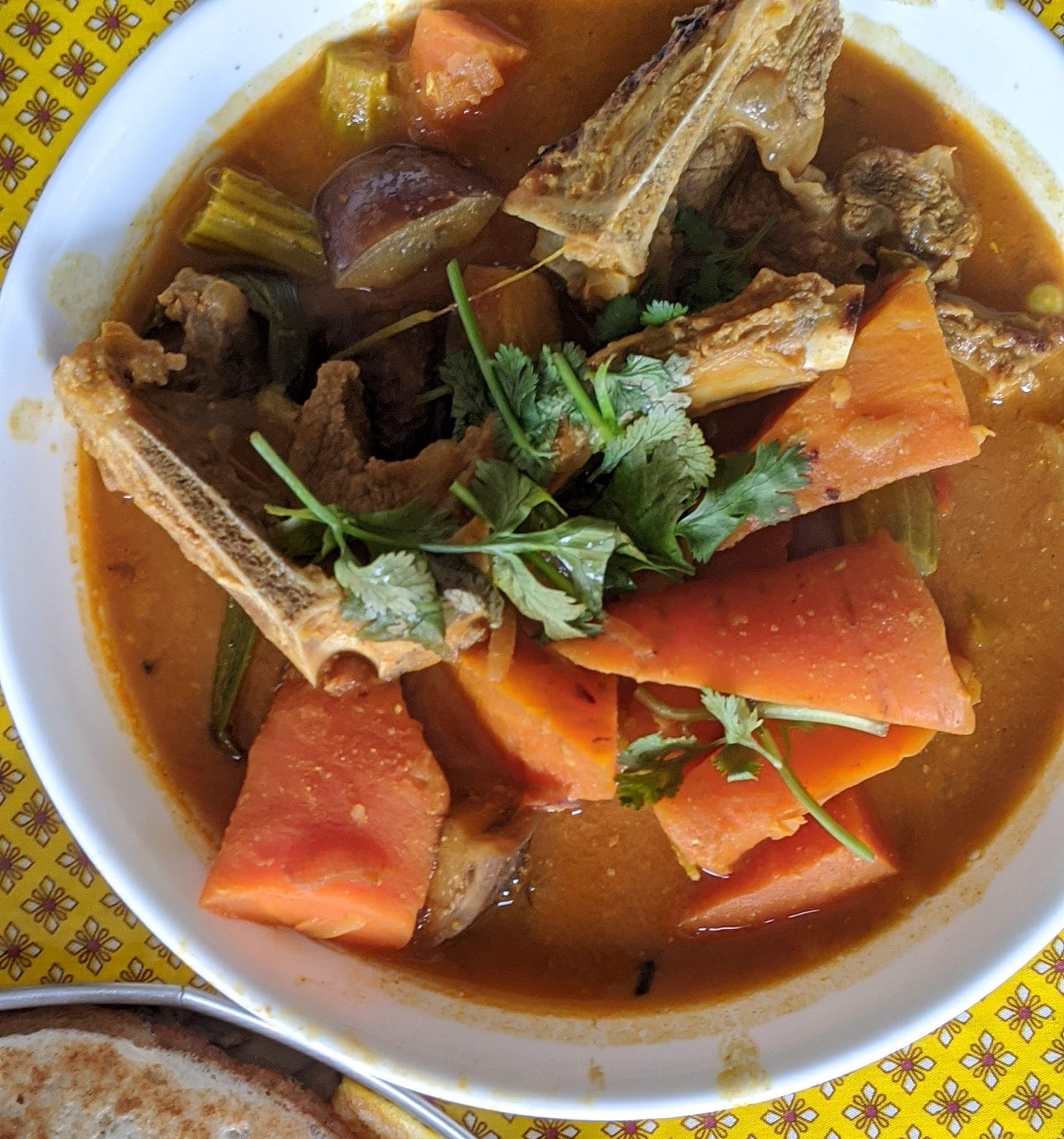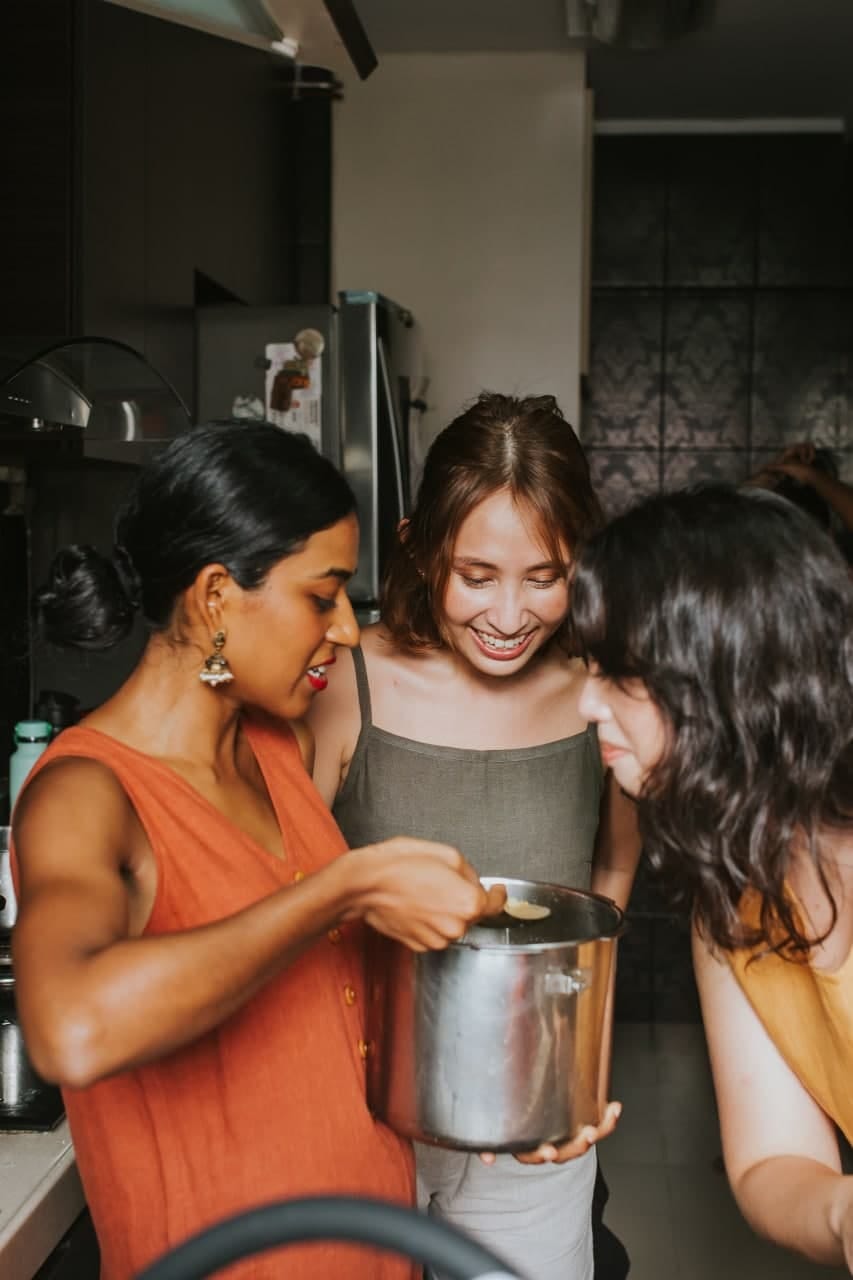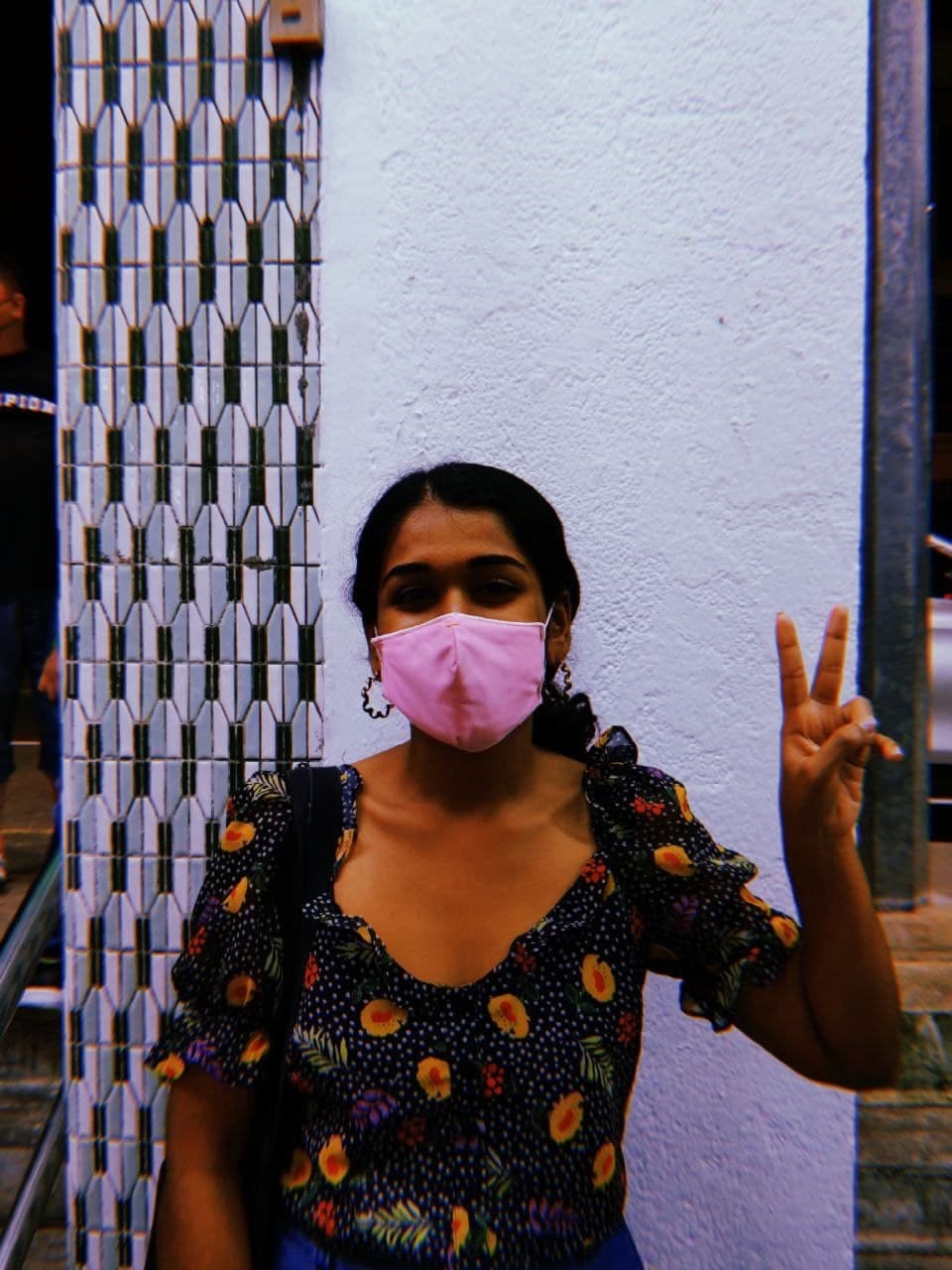The Iftar Menu -
Growing up and going through Ramadan at Spice Zi Kitchen.
It’s 7.09pm and we are all waiting for the azan (the prayer call). Mama Zi is sitting against the wall, wearing her white telokong (prayer wear) with her palms put together. Papa sits at the dinner table, whispering prayers under his breath while distributing dates to each of us. I am, of course, eagerly scanning all the food laid out on the table, doing up a mental list of dishes I will prioritize when the feasting commences. This is a picture of the month of Ramadan in Mama Zi’s household.
I know Ramadan is a special month because my parents have cultivated such a distinct force around it. Growing up, my mother encouraged me to pray more, do more good deeds like donate, and be more patient during Ramadan. Ramadan after all is a month of religiosity and discipline. This ninth month of the Islamic calendar commemorates the revelation of the Quran, to the last Islamic prophet, Prophet Muhammad (pbuh). Most parents take the month of Ramadan to impart the values of deference to God and the appreciation of simple necessities in life like food and water, to their children.
My mother taught my siblings and me how to fast in stages. When we were in primary school, we “half-fasted”. This means that we would start fasting only after an early lunch at 11 am. A normal “full fast” lasts from dawn at around 5 am to dusk at around 7 pm. When we finally graduated from half-fasting in Primary Five, we were dragged out of bed at 4 am in the morning to have sahur - a morning meal to prepare ourselves for a day of fasting. By then, fasting always felt like a team effort. Coming home and complaining of tiredness felt like the protocol. Breaking fast together as a family was a special meal, like a job well done to all of us.
There are many elements that make iftar or breaking fast special. It’s the home-cooked food that is “easy on the stomach”, the random assortment of food everyone buys to contribute to the Iftar table, the food from the mosque, the sitting together, the anticipation for the azan, the gallons of water on the table per person only to have someone steal it at the crucial moment.
There are also so many foods that are specific to Ramadan. The “nombu kanji” or if translated, the fasting porridge, is one such example. One part of the 30-day fasting experience is the ability to do a taste test of the nombu kanjis from all the different mosques in Singapore.
Mama Zi loves guessing the ingredients used in them because they often vary widely. Some kanjis are heavily spiced with turmeric powder while others are lighter, using just white pepper. Some kanjis are thicker, and others are more watery. Generally, Indian Muslims nombu kanjis use channa dal as their base. They also use ginger garlic paste, but other ingredients can be carrots, beans, green peas, corn, even vermicelli, depending on the “style” of the cook hired by the mosque. Mama Zi believes that Indian cooks are heavier on their spices and use mutton while Malay cooks are lighter with their spices and use dried prawns.
Our Iftar menu will be offering Mama Zi’s very own nombu kanji. Mama Zi started experimenting with recipes to create a version of nombu kanji that fits my father’s health requirements. She limits the amount of meat she uses and does not use any fat. Sometimes, she makes a vegetarian version of nombu kanji using black chickpeas and vermicelli.
While this porridge is special to Ramadan, it is usually not eaten as the main meal. Often, it is shared amongst a family as a “starter”. The practical reason for this is that each household is usually only allowed to bring 1 or 2 portions of kanji back home. This ensures that all those who visit the mosque during Ramadan do not go home empty-handed. The other reason is that kanji or porridge in general, is said to help us ease our empty stomachs into a full meal.
The main meal is usually an appam and curry of choice. In our Iftar menu, you will enjoy (and learn to make!) pathiri roti with dalcha. Pathiri roti is a thick, firm and chewy flat bread made from rice flour and grated coconut, and toasted on a tava.
This roti is said to originate from Kerala and Malabar, particularly amongst the Muslim communities. Mama Zi actually refers to this roti as the Varuthamavu Roti or “funeral bread” because, in our community, it is frequently made as a quick meal for funeral attendees. To dip and soak, we usually have thick curries like Dalcha - mutton bones cooked with toor and chana dal, tamarind and loaded with vegetables like carrots, moringa drumsticks, potatoes, green mango, eggplant
The combination of kanji, pathiri roti and dalcha might seem overwhelming but iftar meals can be quite the feast. The reality though, is that we begin the meal ambitiously but always end up with leftovers that we keep for sahur or iftar the next day.
My family also enjoys the occasional post-meal dessert during Ramadan. This dessert is a second kanji, black pulot kanji which is a sweet, thick, creamy magenta-coloured porridge dessert made from black glutinous rice, coconut milk, coconut sugar, and sago seeds. Mama Zi usually leaves the glutinous rice a little uncooked so that there’s a little bite and texture to the sweet treat.
Another dessert option that is lighter, is air katira. Air katira appears only during Ramadan at Ramadan bazars in Singapore. These drinks are brightly coloured in highlighter pink or pandan green, depending on whether they are mixed with rose syrup or pandan extract. While “air” means water in Malay, the term “katira” refers to a sticky sap that is extracted from the almond resin or Goond tree, prominently found in India. The drink air katira actually originates from North India, with the name “gond katira sharbat”. The sticky sap of the Goond tree naturally dries to form crystals which are said to be cooling for the body. These crystals are soaked in water and expand to look like fungus or peach gum. At Spice Zi Kitchen, we add localized flavours to the drink by using pandan, basil seeds, and also rose water.
Ramadan is a month of togetherness for my family and many other Muslim families. There is little need to liaise about when and where to meet because it is understood that dinner will be at home and that everyone will show up before dusk falls. This Ramadan, we would love to invite you to have iftar with us. If you have never been in a home of someone fasting, or you are fasting and would like to break fast with another family, we would love to welcome you to our kitchen and table with you.
Starting from 17 April, Spice Zi Kitchen will open its home for Ramadan. In collaboration with Our Barehands, these sessions hope to bridge perspectives with people from different communities. Guests will get to learn about, cook, and taste dishes made specifically for Ramadan, bring home a batik knot bag made, sourced, and produced in Singapore by Mama Samy, and also receive a $20 Our Barehands voucher.
All photos by: @zomgitsashok
Featured in photos: Beatrice Lee, Sarah Benjamin Huang
Limited slots available for the month of April, you can find out more here.
More on our collaboration, here.
This newsletter is written by Vickland Kaamela Barvin, the youngest daughter of Spice Zi Kitchen. She is a self-acclaimed 'almost vegan’ millennial who loves watching Food King videos and endlessly ‘saves’ anything related to food or dogs on Instagram, but with the knowledge of making an avocado salad in the kitchen. However, she is a keen and curious editorial assistant who made this newsletter possible :-) Tell us here if you have any questions or comments. Thank you for taking the time to read this far :-)

